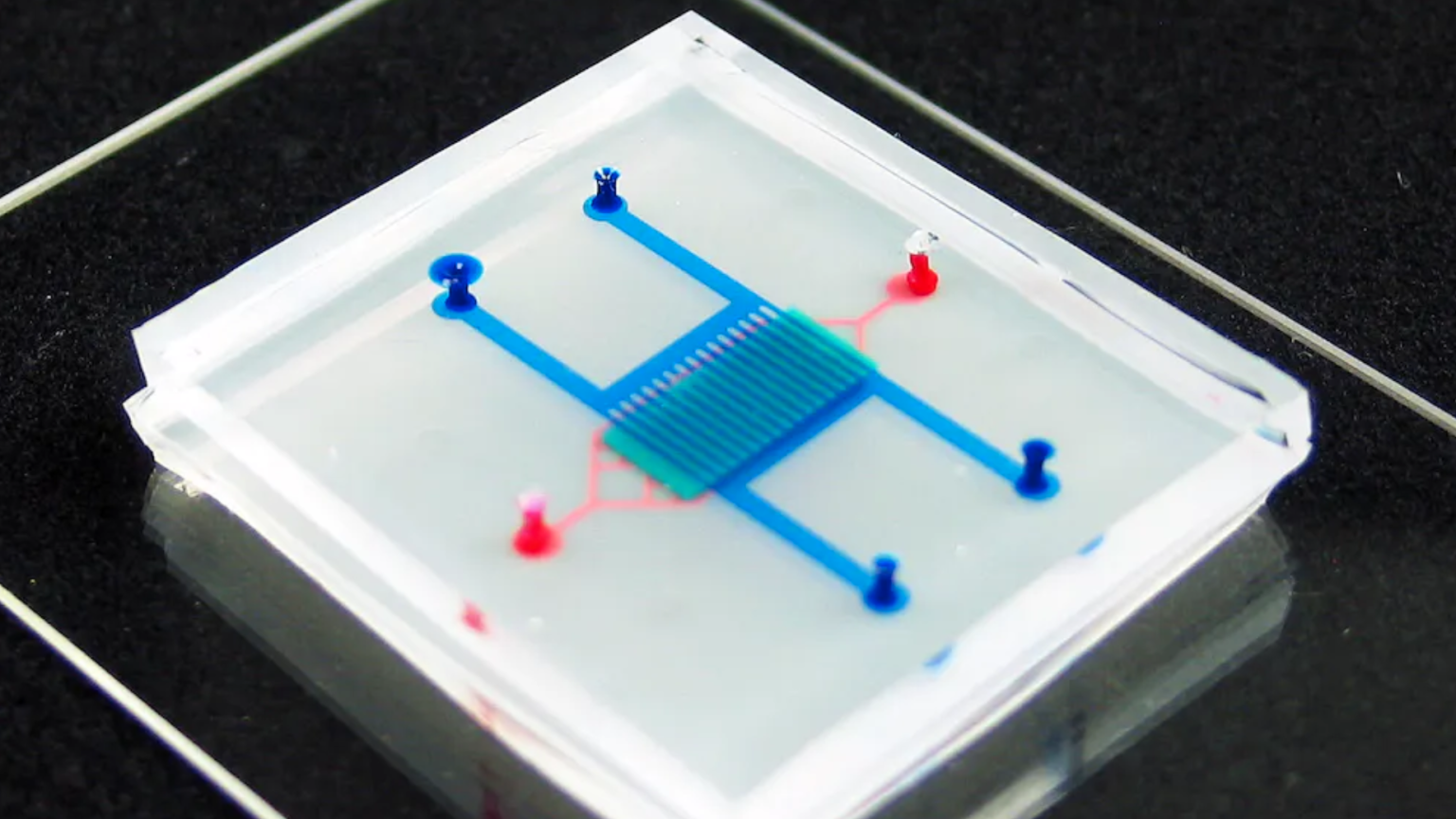Harvard Scientists Build Lung-on-a-Chip

What’s the Latest Development?
Researchers at Harvard have successfully simulated a human lung on a microchip, a technological feat that has promised medical professionals the ability to conduct endless drug trials without the typical expenses or risk involved. “The lung-on-a-chip device is a clear, flexible thumb-sized block of polymer perforated by two tiny channels separated by a thin membrane. … The researchers injected the cancer drug into the blood-vessel-like channel and found that fluid and blood plasma proteins leaked across the membrane into the air channel, similar to the drug’s side effect in patients.”
What’s the Big Idea?
While the lung-on-a-chip represents a big step forward for medical technology, some caution that the complex interactions that occur in the human body remain a long way from being accurately represented in laboratory conditions. Organs in the body, unlike their microchip simulators, are exposed to a constant flow of hormones which affect how they function. Scientists behind the recent study ultimately hope to go beyond the disease models provided by organs-on-a-chip and create a body-on-a-chip, which would link individual organs and attempt to mimic a whole-body response to medical treatments.
Photo credit: Shutterstock.com




